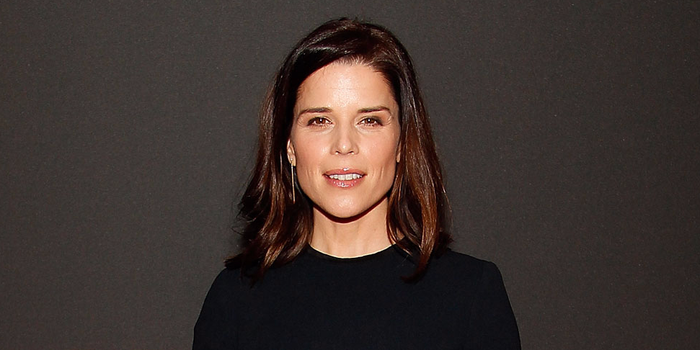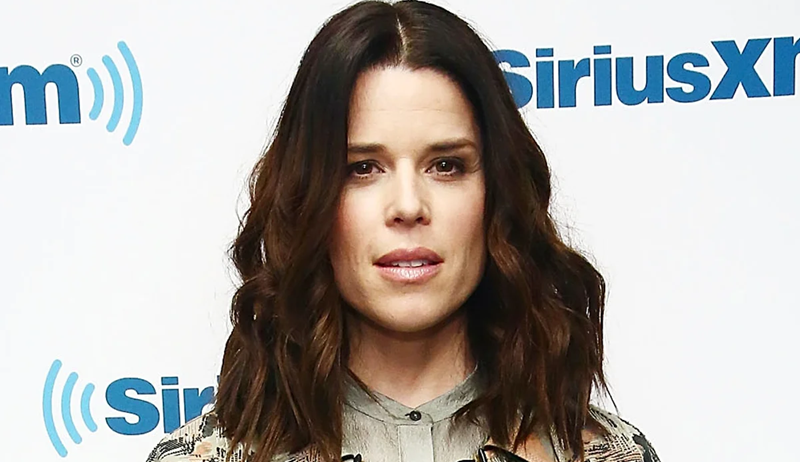Neve Campbell is a Canadian-born actress with an impressively diverse career that spans over three decades. Born on October 3, 1973, Campbell’s journey to stardom began in her childhood years when she trained as a ballet dancer at the National Ballet School of Canada before transitioning to acting in her early teens.
She gained widespread recognition in the mid-1990s for her role as Julia Salinger in the popular television series «Party of Five,» which earned her a Golden Globe nomination. This success paved the way for her iconic role in the hit horror film franchise «Scream,» where she played the lead character, Sydney Prescott. This role solidified her status as a «scream queen» and made her a household name.
In addition to her work in film and television, Campbell has also made significant contributions to theatre. She made her West End debut in «Resurrection Blues» and went on to star in «Love Song» alongside Cillian Murphy. Her performances in both productions were highly acclaimed, demonstrating her versatility as an actress.
Despite the stardom, Campbell has managed to maintain a low profile, prioritising her personal life and family. She is a mother of two and has been open about her experiences with motherhood, often sharing insights in interviews.
Throughout her career, Campbell has frequently used her platform to advocate for causes close to her heart. She is a passionate supporter of animal rights and has been involved in numerous campaigns to raise awareness and funds for various animal charities.
In recent years, Campbell has continued to remain active in the industry, taking on roles in projects such as «House of Cards,» «Grey’s Anatomy,» and the fifth installment of the «Scream» franchise. These roles showcase her ability to continually reinvent herself and stay relevant in an ever-changing industry.
In conclusion, Neve Campbell’s life and career are a testament to her talent, versatility, and resilience. From her early beginnings in ballet to her iconic roles in film and television, she has consistently demonstrated her ability to captivate audiences with her performances. Off-screen, her dedication to her family and commitment to philanthropy reflect her values and the depth of her character. Whether she’s starring in a blockbuster film or advocating for a cause she believes in, Campbell continues to leave an indelible mark on the industry and the world.

Breakthrough Roles and Rise to Stardom
Breakthrough roles often serve as the catalyst for an actor’s journey to stardom. They provide the platform for showcasing their talent, versatility, and screen presence to a wider audience. These pivotal roles can come in various forms, such as a lead character in a high-grossing movie, an unforgettable performance in a critically acclaimed film, or a memorable portrayal in a popular television series. Such roles are career-defining and transformative, often leading to increased recognition, numerous accolades, and a surge in demand for the actor’s craft.
The path to stardom can be arduous and filled with countless auditions, rejections, and minor roles. However, it only takes one defining role to shift the trajectory and propel an actor into the limelight. This launch into fame opens up numerous opportunities, including high-profile projects, endorsement deals, and invitations to prestigious events. However, the rise to stardom is not without its challenges. The sudden surge in popularity can be overwhelming and requires the actor to navigate through the complexities of fame, including constant scrutiny, loss of privacy, and pressure to maintain their success.
Moreover, typecasting can also become a concern if an actor becomes too identified with a specific character or role. Yet, despite these challenges, the allure of fame and the opportunity to make a significant impact in the entertainment industry through their craft continues to drive many aspiring actors. Ultimately, breakthrough roles and the rise to stardom are integral aspects of an actor’s career, providing them with the platform to showcase their talent, gain recognition, and leave a lasting impact in the world of entertainment.
Iconic Characters and Major Projects
Iconic characters have always been an integral part of major projects, particularly in the realms of literature, film, and television. The creation and development of such characters require a profound understanding of human behavior, psychology, and cultural context, which in turn, contribute to the overall success and popularity of the project. From Hamlet in Shakespeare’s timeless plays to Harry Potter in J.K.
Rowling’s best-selling books, iconic characters have the ability to resonate deeply with audiences, evoking a wide range of emotions and inspiring countless interpretations and discussions. In the film industry, characters like Indiana Jones, James Bond, and Darth Vader have become cultural symbols, transcending their original narratives to become part of a larger social dialogue.
The power of these characters lies not only in their unique personalities, compelling storylines, and memorable quotes but also in their ability to reflect and shape societal values, norms, and aspirations. Similarly, in television, characters such as Walter White from Breaking Bad or Tony Soprano from The Sopranos, have redefined the landscape of modern television, pushing the boundaries of character development and narrative complexity.
The creation of such iconic characters often involves a collaborative effort between writers, actors, directors, and other creative professionals, each bringing their unique vision and expertise to the project. In fact, many major projects have been specifically designed around iconic characters, with the characters themselves serving as the driving force behind plot development, thematic exploration, and stylistic choices. As such, iconic characters play a crucial role in the success and cultural impact of major projects, shaping the way we perceive and engage with stories across various mediums.

Transitioning Between Genres
Transitioning between genres is an intriguing process and often a challenging task for many writers and artists. It involves shifting from one literary or artistic style, category, or form to another, often demanding a great deal of creativity, adaptability, and versatility. For instance, an author penning a romance novel may decide to venture into science fiction, or a filmmaker known for comedy may wish to delve into the realm of horror.
This transition is not a straightforward process, as each genre has its unique conventions, tropes, and audiences. The author or artist must comprehend the nuances of the new genre, understand its audience, and adapt their storytelling or artistic techniques accordingly. Moreover, this change often requires a significant shift in mindset, as the creator must let go of familiar patterns and venture into unexplored territory. Despite the challenges, successful genre transition can be extremely rewarding, offering the opportunity to explore diverse narratives, reach new audiences, and significantly broaden one’s artistic range.
However, it’s important to note that the transition should be executed with careful consideration and respect for the new genre, rather than a superficial attempt at novelty or variety. The willingness to learn, evolve, and step outside one’s comfort zone is vital in this journey. Ultimately, transitioning between genres is a testament to an artist’s versatility and their ability to weave compelling narratives across different forms and styles. It’s a bold move that can significantly elevate their craft, and when done successfully, leaves an indelible mark on their artistic legacy.
Behind the Scenes: Producing and Directing
Producing and directing are two key roles fundamental to the creation of a film or a play. They work together behind the scenes to bring a script to life, each role with its distinct responsibilities yet interlinked in many aspects. A producer is essentially the backbone of any film or play, providing financial support and overseeing all aspects of the project from inception to distribution. They are the ones who secure funding, hire the director and other key personnel, and manage the budget throughout the production process.
On the other hand, the director is the creative force, responsible for bringing the script to the screen or stage. They make crucial decisions on casting, lead the rehearsals, and oversee the filming or performance to ensure it aligns with their creative vision. They work closely with actors, guiding their performances and interpreting the script in a way that best serves the story.
While both roles are critical, the producer and director must work in harmony to ensure the success of a film or play. The relationship between the two is pivotal, with the producer providing the resources and the director using those resources to bring the vision to life. This dynamic duo operates behind the scenes, often unsung, but their collaborative efforts are crucial to the final product. Their roles may not always be visible to the audience, but they are instrumental in shaping the narrative and determining the overall quality of the film or play. Without a skilled producer and a talented director working in concert, a script may never reach its full potential. Therefore, the magic of film and theatre production truly lies in their hands.

Legacy and Impact on the Entertainment Industry
The legacy and impact on the entertainment industry is a vast topic that encompasses various elements such as technology, culture, economics, and social change. Over the years, the entertainment industry has left an indelible mark on society, shaping the way we consume and perceive content. The advent of technology, particularly digital platforms, has dramatically transformed this sector. Streaming services such as Netflix and Amazon Prime have redefined the concept of ‘cinema’ and ‘television’, bringing about a paradigm shift in content consumption patterns.
Moreover, the entertainment industry has been a potent force in shaping cultural narratives, and in turn, being shaped by them. Movies, music, and television shows have reflected societal changes and influenced public opinion on critical issues. They have also been instrumental in breaking stereotypes and promoting diversity and inclusivity.
Economically, the entertainment industry has substantial influence, contributing significantly to the GDP of many nations. It has created numerous employment opportunities, fueling growth in ancillary sectors such as marketing, hospitality, and tourism. The industry has also made a mark on the real estate sector, with cities like Los Angeles and Mumbai bearing testament to this fact.
Besides, the entertainment industry’s impact extends to the realm of social change. Celebrities wield considerable influence and use their platform to champion causes, raise awareness, and instigate change. However, the industry has also faced backlash for perpetuating harmful stereotypes and unrealistic expectations, highlighting the need for responsible content creation.
In conclusion, the entertainment industry’s legacy and impact are profound and far-reaching, transcending geographical and cultural boundaries. It continues to evolve, adapt, and innovate, reflecting and shaping the zeitgeist of our times. The industry’s power to entertain, inspire, and influence is what makes it a vital pillar of our society. Regardless of the challenges it may face, it continues to be a beacon of creativity and a catalyst for change.
